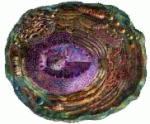Cell Biology
|
10 september 2014 06:17:03 |
| Cryptococcus inositol utilization modulates the host protective immune response during brain infection (Cell Communication and Signaling) |
|
Tweet Background:
Cryptococcus neoformans is the most common cause of fungal meningitis among individuals with HIV/AIDS, which is uniformly fatal without proper treatment. The underlying mechanism of disease development in the brain that leads to cryptococcal meningoencephalitis remains incompletely understood. We have previously demonstrated that inositol transporters (ITR) are required for Cryptococcus virulence. The itr1a? itr3c? double mutant of C. neoformans was attenuated for virulence in a murine model of intra-cerebral infection; demonstrating that Itr1a and Itr3c are required for full virulence during brain infection, despite a similar growth rate between the mutant and wild type strains in the infected brain.
Results:
To understand the immune pathology associated with infection by the itr1a? itr3c? double mutant, we investigated the molecular correlates of host immune response during mouse brain infection. We used genome-wide transcriptome shotgun sequencing (RNA-Seq) and quantitative real-time PCR (qRT-PCR) methods to examine the host gene expression profile in the infected brain. Our results show that compared to the wild type, infection of mouse brains by the mutant leads to significant activation of cellular networks/pathways associated with host protective immunity. Most of the significantly differentially expressed genes (SDEG) are part of immune cell networks such as tumor necrosis factor-alpha (TNF-?) and interferon-gamma (IFN-?) regulon, indicating that infection by the mutant mounts a stronger host immune response compared to the wild type. Interestingly, a significant reduction in glucuronoxylomannan (GXM) secretion was observed in the itr1a? itr3c? mutant cells, indicating that inositol utilization pathways play a role in capsule production.
Conclusions:
Since capsule has been shown to impact the host response during Cryptococcus-host interactions, our results suggest that the reduced GXM production may contribute to the increased immune activation in the mutant-infected animals. |
| 101 viewsCategory: Cell Biology |
 Mitochondrial localization of the OAS1 p46 isoform associated with a common single nucleotide polymorphism (BMC Cell Biology) Mitochondrial localization of the OAS1 p46 isoform associated with a common single nucleotide polymorphism (BMC Cell Biology)Agent-based modeling of autophagy reveals emergent regulatory behavior of spatio-temporal autophagy dynamics (Cell Communication and Signaling) 
|
| blog comments powered by Disqus |
MyJournals.org
The latest issues of all your favorite science journals on one page
The latest issues of all your favorite science journals on one page



